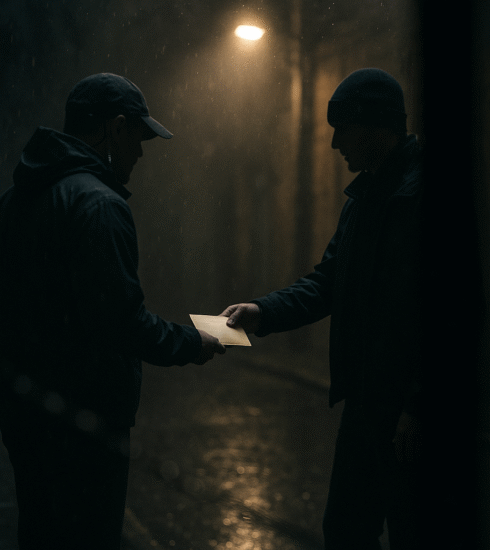Profiling Counter Moves, and How To Be Boring
Profiling is a fundamental process of observation and assessment. It is not about suspicion or paranoia. It is about recognizing patterns and understanding baseline behavior. The goal is to see the environment clearly and identify anomalies that may indicate a threat. This skill set is valuable for personal security in any setting. It allows you to anticipate potential problems and avoid them. The core of effective personal security lies in mastering the art of being uninteresting to those with ill intent.
The most dangerous person is the one you never see. Your primary defense is not being selected as a target. Blending into your environment is a form of active protection.
The Mechanics of Observational Baselines
Every environment has a natural rhythm and a set of normal behaviors. This is the baseline. In a train station, people move with purpose toward platforms or exits. They check schedules or look for arriving passengers. Their body language, pace, and focus are consistent with the location. Your first task is always to establish this baseline for yourself. Take a moment to absorb the scene without judgment. Note the common clothing, the general noise level, and the flow of foot traffic. This mental snapshot becomes your reference point for everything that follows.
An anomaly is any action or presence that breaks from this established baseline. It is not inherently a threat. A person standing completely still in the middle of a moving crowd is an anomaly. Someone wearing a heavy coat on a warm day might be an anomaly. A vehicle circling the same block repeatedly is a clear anomaly. Your job is to note these deviations without jumping to conclusions. The anomaly is a flag that warrants further passive observation. You are gathering data, not making accusations.
Context determines the significance of an anomaly. The person standing still may be lost and looking at a map. The coat might be due to a personal medical condition. Your assessment must remain fluid and based on continued observation. Look for clusters of anomalies or a single persistent anomaly that cannot be easily explained. This refined focus separates professional observation from mere paranoia. It is a skill that improves with consistent practice in various settings.
The Principle of Being a Hard Target
A hard target is a person or location that presents a significant challenge to an adversary. The objective is to make the effort required to engage you outweigh the perceived reward. This is achieved through a combination of awareness, posture, and simplicity. You are not trying to appear dangerous or intimidating. You are demonstrating that you are alert, unpredictable, and not an easy victim. Most predatory behavior seeks the path of least resistance. By removing yourself from that category, you encourage a threat to look elsewhere.
Your posture and movement communicate a great deal about your awareness. Keep your head up and your eyes off your phone in transitional spaces. Walk with a confident, purposeful stride that indicates you know where you are and where you are going. Avoid wearing noise canceling headphones that eliminate your auditory awareness of your surroundings. These simple actions broadcast that you are engaged with your environment. An individual looking for an easy mark will notice this and likely pass you by for someone who is distracted and vulnerable.
Simplicity in your daily routines also contributes to being a hard target. Vary your routes and schedules when possible to avoid presenting a predictable pattern. Do not publicly advertise your departure or return from trips on social media in real time. Keep valuable items out of plain sight within your vehicle. These habits reduce your visibility to anyone who might be casually observing the area for opportunities. The goal is to make your life uninteresting from a criminal intelligence perspective.
Do not advertise your destination. Do not confirm your schedule. Do not validate your fears. Your routine is your greatest vulnerability. Break it with purpose and without pattern.
Counter Surveillance for Daily Life
Counter surveillance is often misunderstood as a complex series of spy tradecraft moves. For civilian application, it is far more straightforward. It is the practice of verifying that you are not being specifically targeted for surveillance. This is done through simple, natural observations integrated into your normal movement. The key is to avoid obvious or repetitive actions that would themselves be anomalous. You are not trying to lose a tail. You are confirming that one does not exist so you can proceed with confidence.
Use natural pauses and reflections to observe your environment. Stopping to window shop provides a perfect reason to glance behind you. Pausing to tie your shoe allows you to see who else stops or adjusts their pace. Using the reflective surface of a building window or a car mirror lets you observe the street without turning your head. These actions are innocuous and blend seamlessly into urban life. They provide you with valuable information without signaling to anyone that you are conducting a check.
If you observe a potential anomaly, do not confront it. The goal is avoidance, not engagement. Alter your route in a calm and natural manner. Turn down a different street or step into a public building like a cafe or store. From this new position, you can observe the street and see if the anomaly persists or continues on its way. This process allows you to verify your initial observation. It provides a clear, safe method to rule out a coincidence or confirm a potential threat.
Verification and The Law of Two
Initial observations can be misleading. Stress, fatigue, or a simple misunderstanding can create false positives. The Law of Two is a simple rule to prevent overreaction. Before you decide a potential threat is real, you must have two separate data points to verify it. Seeing a person multiple times in different locations is two data points. Noting a vehicle and then seeing the same vehicle later is two data points. A single anomaly is a curiosity. Two related anomalies are a pattern that requires a response.
Verification is the process of collecting that second data point. It must be done passively and safely. If you see a potential concern, change your vantage point or continue your observation from a secure location. Give the situation time to develop. Often, a second look will provide a benign explanation for what you first saw. This disciplined approach prevents you from acting on fear alone. It ensures your responses are measured, appropriate, and based on factual observation.
Your response to a verified pattern should always be to disengage and notify the proper authorities. Move to a safe, public, and well populated area. If you are driving, proceed to a police station or a busy shopping center. From a position of safety, you can then contact law enforcement and report your observations. Provide a clear, factual description without speculation. Your role is to be a good witness. You have successfully avoided a potential threat and are now providing information to those whose job it is to investigate.
The Power of the Gray Man Concept
The Gray Man is an individual who can move through any environment without attracting attention. They do not stand out in dress, behavior, or mannerisms. They blend seamlessly into the local population and become effectively invisible. This is the ultimate expression of being boring from a security perspective. It is not about being antisocial or unfriendly. It is about cultural and environmental mimicry that allows you to operate without a profile.
Your clothing is your first layer of camouflage. Dress appropriately for your environment and in a manner that is common for the area. A business suit stands out on a hiking trail just as hiking boots stand out in a corporate office. Observe what the majority of people are wearing and choose attire that fits within that spectrum. Avoid clothing with large logos, bright colors, or political statements that draw the eye. The goal is to be forgettable, to be one of the crowd.
Your behavior must also match the baseline. Do not speak louder than those around you. Avoid dramatic gestures or actions that would make you the center of attention. In a crisis, the Gray Man is the first to notice the problem and the last to be noticed by the threat. They move with the crowd or slip away unnoticed while others panic or draw attention to themselves. Mastering this concept requires constant situational awareness and a conscious effort to suppress habits that make you memorable.
Maintaining a Protective Mindset Without Paranoia
A protective mindset is a state of relaxed awareness. It is not a state of constant fear or anxiety. You are simply noting what is around you and assessing it against the baseline. This is a sustainable practice that can be maintained throughout the day without causing mental fatigue. Paranoia, by contrast, is the belief that threats are everywhere and that every anomaly is dangerous. This state is exhausting, ineffective, and leads to poor decision making.
The difference lies in objectivity. The professional observes facts. The paranoid individual reacts to feelings. Trust the process of baseline, anomaly, verification. This structured approach removes emotion from the equation. It allows you to operate on logic and observed data. You acknowledge potential threats without being consumed by them. This balance is crucial for long term application of these principles in everyday life.
Regularly practice these skills in low risk environments to build confidence. Go to a mall or a park and work on establishing a baseline. Note the anomalies and then seek their explanations. This training reinforces that most anomalies are harmless. It builds your confidence in your ability to accurately read your environment. This confidence is the antidote to paranoia. You know you can identify a real threat if one appears, so you do not need to fear every shadow.
Begin your next public outing with a single task. Spend the first sixty seconds doing nothing but establishing the baseline. Note the sounds, the movement, the rhythm. This simple act is the foundation of everything that follows.





